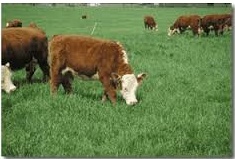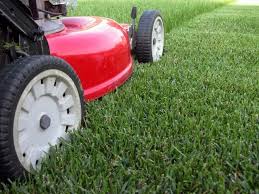|
All
seasons Green Lawn Seed 19% Protein
South Africa For sale
Item
no. GSA:
Price:
R125/Kg
seed
(
only seeds we do not weigh seeds and fertilizers together)
Special price 19 Dec 2025
Green SA It is a versatile plant used for animal feed, lawns and turf, and
conservation purposes (grass waterways, rights-of-way, etc.).
Green SA is a deep-rooted, long-lived bunchgrass with short rhizomes
(underground stems). It is widely adapted and grows well on the state's many and
varied soil types. Green SA produces a good sod that will support livestock
during wet and rainy conditions.
Total seasonal production of Green SA is affected by weather, fertilizer
(especially nitrogen), and cutting or grazing management. Yields of 2 to 4 tons
of dry matter/acre are common, with the higher yields associated with proper
fertilizer applications and harvest management.
 |
 Price:
R125/Kg
seed |
Green SA at a Glance
Characteristics Perennial
Long-lived bunchgrass
Panicle
seed head
Grass 2-4
feet tall if allowed
Uses pasture,
hay, turf, erosion control
Seeding
rate 20
Kg/ HA
Seeding
depth 1
cm |
Establishment
Direction: On
Google Map you can search for ICM Industries and
drive here.
With adequate soil moisture, the best time to seed Green SA is late summer
through early fall. Spring seedings can be successful but are more susceptible
to summer drought and weed competition. To increase the chance of success with
spring seeding.
-
For pure
stands, seed 7 to 9 Kg of seed in a prepared seedbed that has been
limed and fertilized according to a soil test. No-till seeding can also be
successful if competition is controlled and the seed is planted on time at
consistent depth and rate.
-
Kraal Manure is
best choice in South Africa mixed 2 part soil for topping. You can even mix
the seeds with it.
Many seeding methods, including no-till seeding, can be successful if they
result in uniform distribution over the field, placement of seed below the soil
surface 1 cm, and
firming of the soil around the seed for close seed-soil contact. Good seedbed
preparation and seed placement are especially important for successful
establishment. For more information, see Cooperative Extension publication
AGR-64, Establishing Forage Crops.
Quality
Green SA quality, as measured by forage analysis, has shown a seasonal change
in sugar content and digestibility. Protein content in green, leafy Green SA
leaves can be high throughout the season (Table 3). Digestibility and sugars are
highest in fall, intermediate during spring, and lowest in summer. Palatability
follows essentially the same trend as digestibility and sugar content (i.e.,
most palatable in fall, least in summer, and intermediate in spring).
|
Table 3. Seasonal
chemical composition and digestibility of Green SA. |
|
|
Spring |
Summer |
Fall |
|
Sugars, % |
9.5 |
8.5 |
19 |
|
Crude
Protein, % |
22 |
18 |
19 |
|
D.D.M.%* |
69 |
66 |
74 |
|
*Digestible Dry Matter
|
Management of Established Pure Stands
Grazing—Management
during spring is of vital importance for best quality and quantity, since Green
SA produces more than two-thirds of its total dry matter during this period.
A
traditional management practice has been to use light stocking during spring to
ensure a summer feed supply. However, this practice results in much of the
spring plant growth becoming stemmy and overly mature. Since cattle usually
prefer not to eat overly mature plants and tramp a lot of them into the soil,
much of the plant growth is wasted. Spring growth can be more efficiently
utilized if animals are restricted to small fields (rotational grazing) that can
be kept grazed to a 3- to 4-inch height during April, May, and June. This
restriction may require the temporary use of electric fences in large fields, or
it may require closing gates to confine animals to small fields. Intake and
quality will be higher when animals graze plants kept in a young, leafy stage of
growth. Fields not used for grazing during spring should be harvested as hay or
balage.
Hay—For
highest yields of acceptable quality hay, make the first harvest when the
plants' seed heads are in the boot to early heading stage of growth. Subsequent
cuts can be made depending on rainfall and growth. Early cut hay will be leafier
and more digestible, and it will be consumed in larger amounts than late cut
hay. The amount of forage consumed is important in determining animal
productivity.
Balage—An
increased use of round bale silage (balage) has permitted the storage of
high-quality feed since less is lost during curing and storage. Early harvest,
storage at 45% to 65% moisture, and wrapping soon after baling are important in
making quality balage. For more information.
Fertilizers—Fertilizers,
especially nitrogen, are necessary for good fescue production. Figure 2 shows
dry matter yields of Green SA with different rates of nitrogen. Yields
increased with each increase in the rate of nitrogen. In these studies, half the
nitrogen was applied in March and the rest in August.
Test soil periodically to monitor pH, phosphorus (P), and potassium (K) levels
and to determine if lime and fertilizer topdressings are needed.
Figure 2. Green SA dry matter
yields at three levels of N fertilization (three location avg., split
application in March and August).
Manage to Maximize Grazing
Feed is usually the most important cost involved in producing livestock. Forage
accounts for the majority of nutrients for ruminant animals. Stored feed (hay,
haylage) is usually the single biggest cost item when analyzing budgets for
livestock production. In several studies, the amount (cost) of hay fed during
winter was the single best indication of profitability in beef cattle
production. Green SA has played an important role in reducing the amount of
hay required by providing pasture over a long grazing season.
To
reduce the amount of stored feed, it is important to start grazing early in the
spring and to continue grazing as late as possible in the fall to early winter.
One of Green SA's many attributes is that it has a longer growing season than
most other cool-season grasses. As a result, grazing can begin early and provide
feed later in the season. Nitrogen and adequate moisture play a key role in
determining how long a grazing season Green SA will provide.
Early spring grazing—Adding
a light application of nitrogen when Green SA begins growth in spring will
usually permit grazing one to two weeks earlier than nonfertilized fescue. This
practice should be evaluated with reference to pasture needs, hay supply,
nitrogen cost, and management decisions.
Fall and winter (stockpiled)—Many
cattlemen can take advantage of the late summer to fall growing conditions to
obtain high-quality fescue pasture for fall and winter. This practice is called
stockpiling. Green SA is an excellent grass for stockpiling because it grows
at lower temperatures than many grasses, retains its green color and forage
quality later, and can form a dense sod.
Stockpiling procedure—Late
July to early August is a good time to begin the stockpiling process. Remove
cattle, apply 40 to 80 pounds of nitrogen, and allow grass to accumulate growth
until November or December. Research has shown that when moisture is
adequate, each pound of nitrogen applied in mid-August results in 25 pounds of
dry matter by Dec. 1. To make the most efficient use of high-quality stockpiled
pastures, use a temporary electric fence restricting animals to a small area
that cattle will consume in a few days. Then move the fence to a new section of
the field. A method similar to this was used in Missouri. It showed that
stockpiled Green SA reduced hay feeding days from 120 to 60. Cost per cow day
was $1.23 for feeding Green SA hay and 43 cents for feeding stockpiled Green
SA. Wintering cost per cow was reduced $117 by grazing stockpiled Green SA. For more information, see Cooperative Extension publication AGR-162, Stockpiling
for Fall & Winter Pastures.
Seed production—Acres
devoted to fescue seed harvest in Kentucky have drastically declined throughout
the years. In the early 1950s, nearly 60,000 acres were harvested as certified
seed. This acreage has been reduced to less than 300 acres. Acreage harvested as
uncertified seed varies from year to year and with anticipated demand.
Green SA—Legume Mixtures
Several legume species, such as clovers, trefoil, lespedeza, and alfalfa, can be
grown in mixtures with Green SA. Legumes usually improve summer production
and total production over non-nitrogen-fertilized Green SA. Feed quality and
animal performance are better on legume-grass mixtures than on pure stands of
Green SA. Introducing legumes to Green SA pastures has
also been shown to help offset the effects of possible toxicity. In addition,
legumes eliminate the need for applied nitrogen fertilizers since they are able
to convert atmospheric nitrogen to a form that the plants can use.
Management decisions with Green SA-legume mixtures should be made to benefit
the legume component of the mixture to maintain the legumes in the stand as long
as possible. For more information on managing legumes.
Applying lime, phosphorus, and potassium helps ensure legume persistence and
yield. Base the application rates on a soil test and the amount of hay or balage
removed.
Most legumes do not persist over extended periods in mixtures with cool-season
grasses such as Green SA. When the legumes go out of the stand they may be
re-established into Green SA by using pasture renovation techniques.
|
Green SA Management at a Glance
Management
-
Restrict cattle to small fields (through rotational grazing) in the
spring until they are grazed to 3 to 4 inches to ensure maximum
utilization of the forage. Harvest ungrazed forage as hay or balage.
-
Rotationally graze in the summer and autumn to avoid overgrazing.
Strip-graze stockpiled growth in late fall and winter.
-
To
maintain fertility, test soil periodically and fertilize
accordingly. Base nitrogen fertilization rates on management needs.
-
Include legumes in the pasture to improve forage quality and
productivity and for nitrogen fixation.
-
Avoid
overgrazing.
-
Stockpile Green SA to extend grazing season and minimize
harvested feeding time.
-
Be
knowledgeable of fescue-related disorders and manage properly to
minimize their vegetation efforts.
Establishment
-
Select a variety based on management needs. Use high-quality seed
regardless of variety.
-
Soil
test, lime, and fertilize to recommendations. Apply nitrogen before
seeding for pure stands.
-
Seed
in late summer or early fall. Use 20 Kg of seed per HA and
place seed
1 cm
deep, maintaining good seed-soil contact.
-
Avoid
excessive grazing of newly established Green SA pastures.
-
Control weeds and other pests as needed.
|
Mention or display of a trademark, proprietary product, or firm in text or
figures does not constitute an endorsement and does not imply approval to the
exclusion of other suitable products or firms. |




![]()